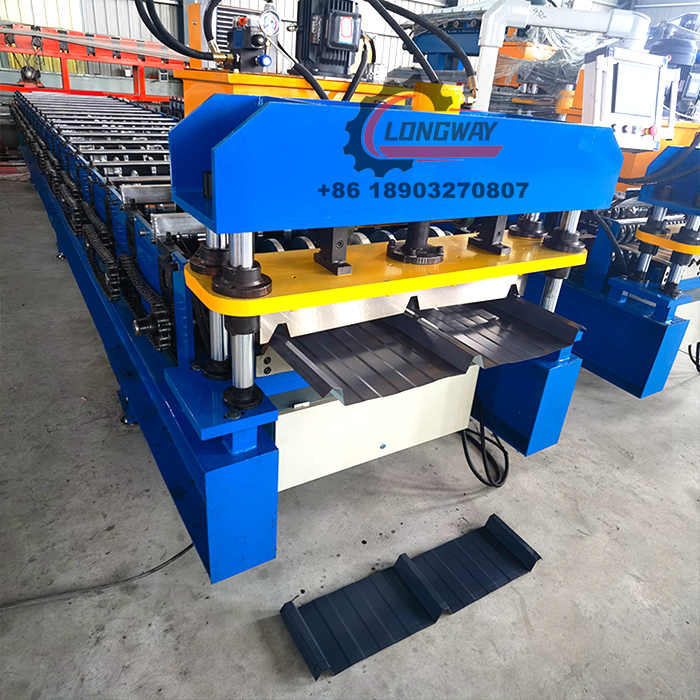on site roll forming
On-Site Roll Forming A Modern Solution for Building Needs
In recent years, the construction industry has witnessed a transformative shift towards more efficient and cost-effective solutions. One such innovation that has gained momentum is on-site roll forming. This modern technique offers a plethora of benefits for builders, architects, and manufacturers alike, revolutionizing the way metal components are produced and utilized in construction projects.
What is On-Site Roll Forming?
On-site roll forming is a manufacturing process that involves shaping metal into desired profiles on-location, using specialized machinery. This process allows for continuous lengths of metal to be rolled into various shapes and sizes, tailored specifically to meet the project requirements. Unlike traditional methods that often require pre-fabrication in a factory, on-site roll forming brings the manufacturing capabilities directly to the construction site.
Advantages of On-Site Roll Forming
1. Efficiency and Time-Saving One of the foremost advantages of on-site roll forming is the significant reduction in production and delivery times. Since the metal profiles are created on-site, the need for transportation from a factory is eliminated. This not only accelerates the construction schedule but also allows for last-minute design changes without extensive delays.
2. Cost-Effectiveness Transporting bulk materials from factories can be costly, both in terms of logistics and labor. On-site roll forming minimizes these expenses, as manufacturers can produce only what is needed, reducing waste and excess inventory. This pay-as-you-go model allows construction projects to stay within budget while maximizing resources.
3. Customization Every construction project has unique needs, and on-site roll forming offers unparalleled customization. Builders can specify dimensions, shapes, and finishes based on the requirements of the project or the preferences of the client. This flexibility ensures that the components fit perfectly, leading to a high-quality finished product without the need for extensive adjustments.
4. Reduced Waste Traditional manufacturing often results in large volumes of scrap material. On-site roll forming minimizes waste by allowing production to be adjusted in real-time, ensuring that the materials are used efficiently. This not only benefits the environment but also contributes to cost savings, as less material needs to be purchased and processed.
on site roll forming

Applications of On-Site Roll Forming
On-site roll forming is versatile and can be utilized for a range of applications within the construction industry. Common uses include the production of roofing sheets, wall panels, and structural components like purlins and beams. This method is particularly beneficial in projects involving large-scale constructions, such as warehouses, industrial buildings, and commercial facilities, where specific material requirements can vary significantly.
Moreover, on-site roll forming is also advantageous in retrofitting and repair projects. Rather than sourcing pre-fabricated components that may not perfectly match existing structures, contractors can create precise fittings on the spot, ensuring structural integrity and aesthetic coherence.
Challenges and Considerations
Despite its numerous advantages, on-site roll forming does come with certain challenges that builders must address. The initial investment in machinery and training may be substantial, and the technology may not be suitable for all types of projects. Additionally, it requires skilled operators who understand the complexities of roll forming processes and can ensure the quality of the end product.
While these challenges exist, many construction companies and contractors are increasingly recognizing the long-term benefits of on-site roll forming, leading to a growing acceptance and implementation of the technology in the industry.
Conclusion
On-site roll forming represents a significant advancement in construction methodologies, combining efficiency, cost-effectiveness, and customization into a single solution. As the demand for faster, greener, and more adaptable construction practices continues to grow, on-site roll forming stands out as a key player in shaping the future of building design and manufacturing. With its ability to streamline operations and cater to specific project needs, it is poised to become an integral part of the modern construction landscape. Embracing this innovative approach not only enhances productivity but also contributes to more sustainable practices in the industry.
-
Key Features to Look for in a Roof and Wall Panel MachineNewsMay.23, 2025
-
Key Features of a Roller Shutter Door Forming MachineNewsMay.23, 2025
-
Key Features of a Purlin Roll Forming MachineNewsMay.23, 2025
-
Key Features of a Cut to Length & Slitting LineNewsMay.23, 2025
-
Benefits of Using a Downspout Gutter Forming MachineNewsMay.23, 2025
-
Advantages of Using a Steel Deck Floor Roll Forming MachineNewsMay.23, 2025
-
Revolutionize Your Gutter Production with a Gutter MachineNewsMay.23, 2025








